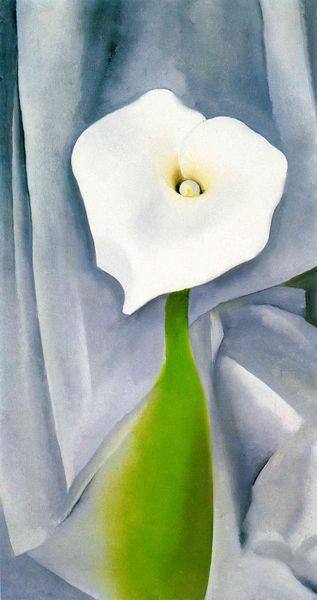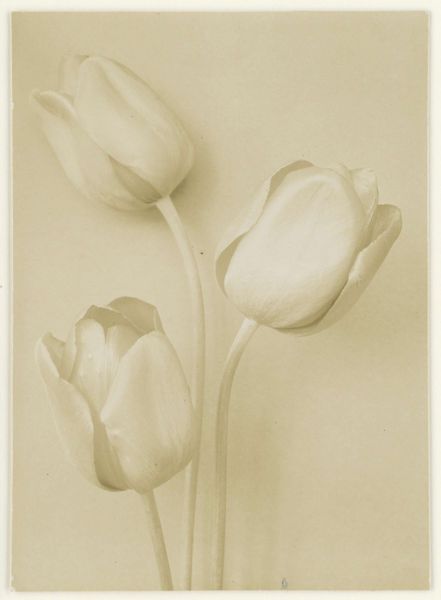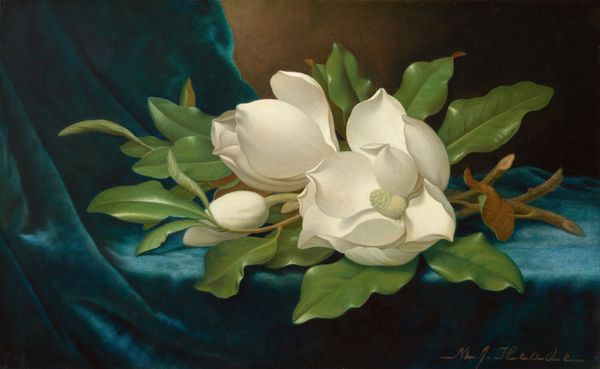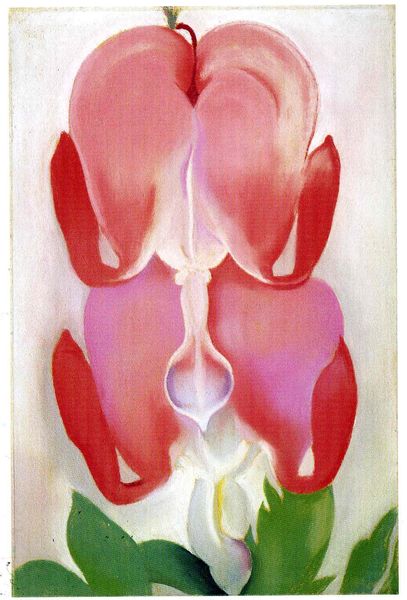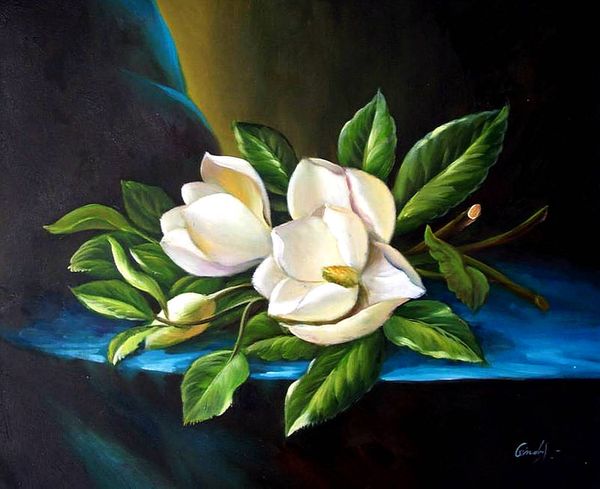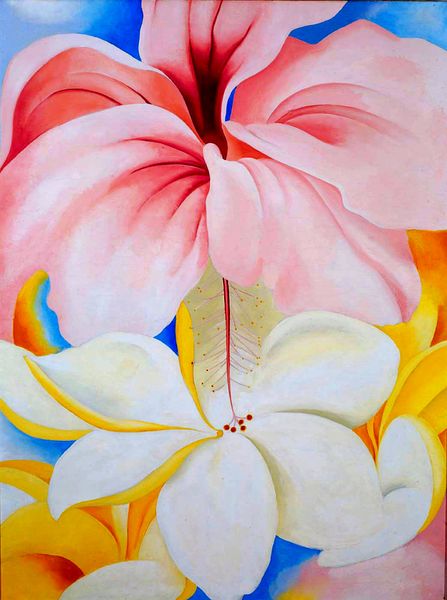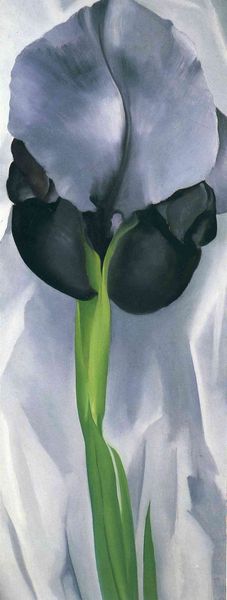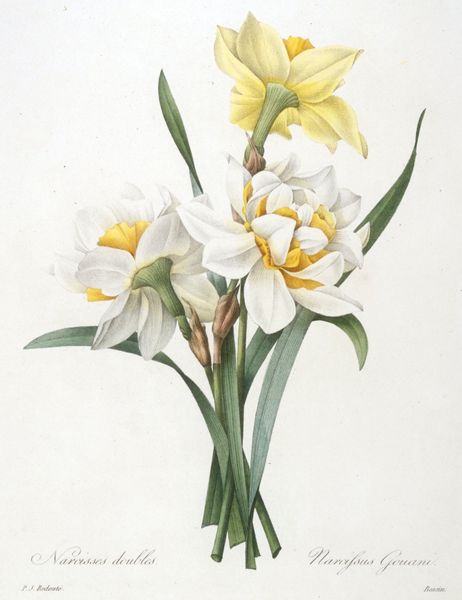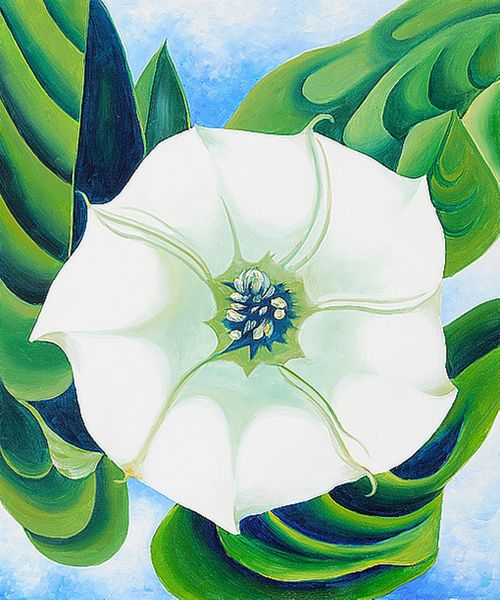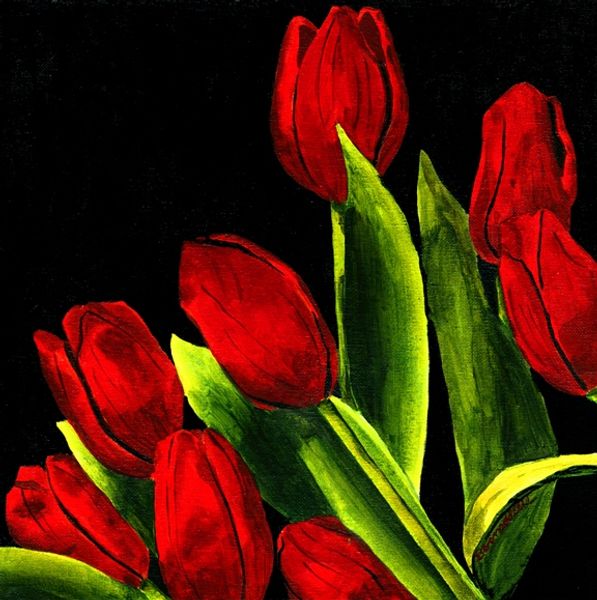
painting, oil-paint
#
precisionism
#
organic
#
painting
#
oil-paint
#
flower
#
floral photography
#
plant
#
abstraction
#
botany
#
modernism
#
flower photography
Copyright: Public domain US
Editor: Here we have Georgia O'Keeffe's "Calla Lily Turned Away" from 1923, rendered in oil paint. There's a certain...intimacy to the composition, even a melancholy feeling as the flower seems to shy away. How do you interpret this work? Curator: I see a powerful statement about the complexities of femininity in the early 20th century. O'Keeffe's flowers are so much more than just botany. The way the petals unfurl, the subtle color gradations... They speak to a burgeoning sexual liberation, but also perhaps a vulnerability, a turning away as you noticed, from the male gaze that was so prevalent during this time. Do you notice how O'Keeffe avoids overt eroticism while still suggesting it? Editor: I do now! So the 'turning away' becomes a gesture of self-possession rather than submission? Curator: Precisely! Think about the social constraints placed on women artists. They were often pressured to depict traditional subjects in a palatable way. O'Keeffe, by abstracting the flower, reclaiming its image, subverts these expectations. What do you think the whiteness contributes? Editor: Purity, maybe? But maybe it is a false purity. A cover for a hidden sexuality? Curator: It is both! And, importantly, that tension is part of the meaning. The painting then embodies the lived experiences of women navigating shifting social boundaries. This wasn't just a painting of a flower; it was a revolutionary act! Editor: I'll never see O'Keeffe the same way again. This really underscores how crucial historical and social context is when approaching art. Curator: Absolutely. By understanding the struggles and triumphs of artists like O'Keeffe, we can better appreciate the radical potential of art to challenge and transform our understanding of the world.
Comments
No comments
Be the first to comment and join the conversation on the ultimate creative platform.
